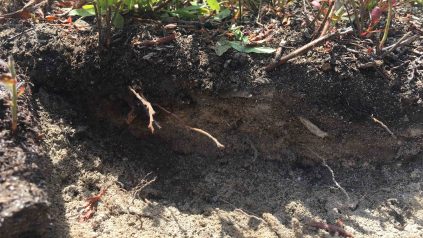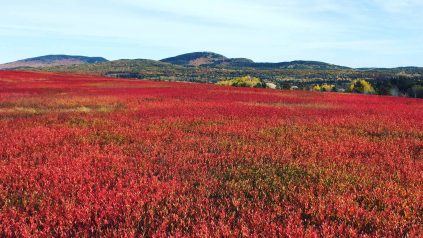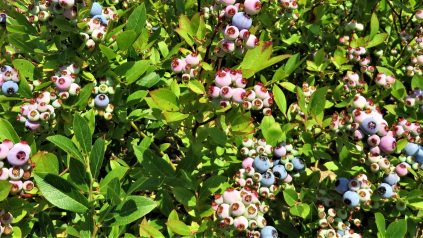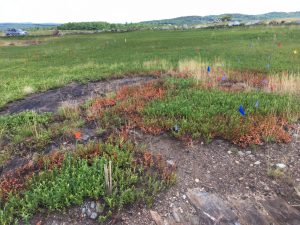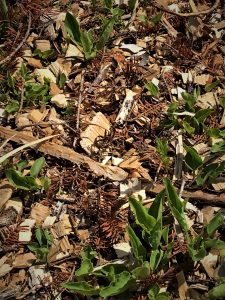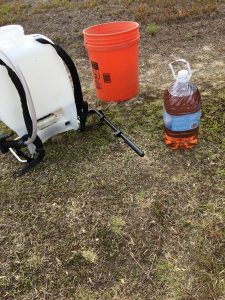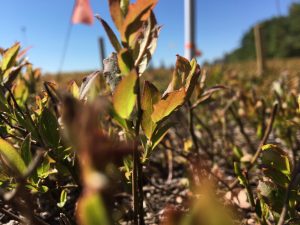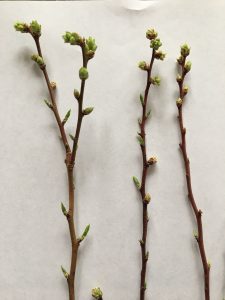Nutrient Management in Wild Blueberry
How to Assess Plant Health:
Look for symptoms: abnormal leaf color, poor growth and low yields. Deficiencies in N, P, K and MG typically appear in the lower leaves. Deficiencies in B and Ca appear in upper leaves.
Test your soil – for optimal pH
Test leaf nutrient contents – for N & P (make sure you sample many clones in a field).
More information on Wild Blueberry Nutrient Management
Top 3 Ways To Improve Plant Health
- Fill Bare Spots (mulching)
- Fertilize, Synthetic Nutrients
- Weed Reduction
Fertilizer in Wild Blueberry
Traditional Methods
- Granular fertilizers, such as MAP (mono ammonium phosphate, 12-61-0) and DAP (diammonium phosphate, 18-46-0).
New Methods, currently under review
- Urea (dried chicken manure)
- Compost
- Foliar Spray
Improve Your Crop Cover!
Nutrient Testing
Information in this publication is provided purely for educational purposes. No responsibility is assumed for any problems associated with the use of products or services mentioned. No endorsement of products or companies is intended, nor is criticism of unnamed products or companies implied.
© 2020
Call 800.287.0274 (in Maine), or 207.581.3188, for information on publications and program offerings from University of Maine Cooperative Extension, or visit extension.umaine.edu.
The University of Maine is an EEO/AA employer, and does not discriminate on the grounds of race, color, religion, sex, sexual orientation, transgender status, gender expression, national origin, citizenship status, age, disability, genetic information or veteran’s status in employment, education, and all other programs and activities. The following person has been designated to handle inquiries regarding non-discrimination policies: Director of Equal Opportunity, 101 North Stevens Hall, University of Maine, Orono, ME 04469-5754, 207.581.1226, TTY 711 (Maine Relay System).

